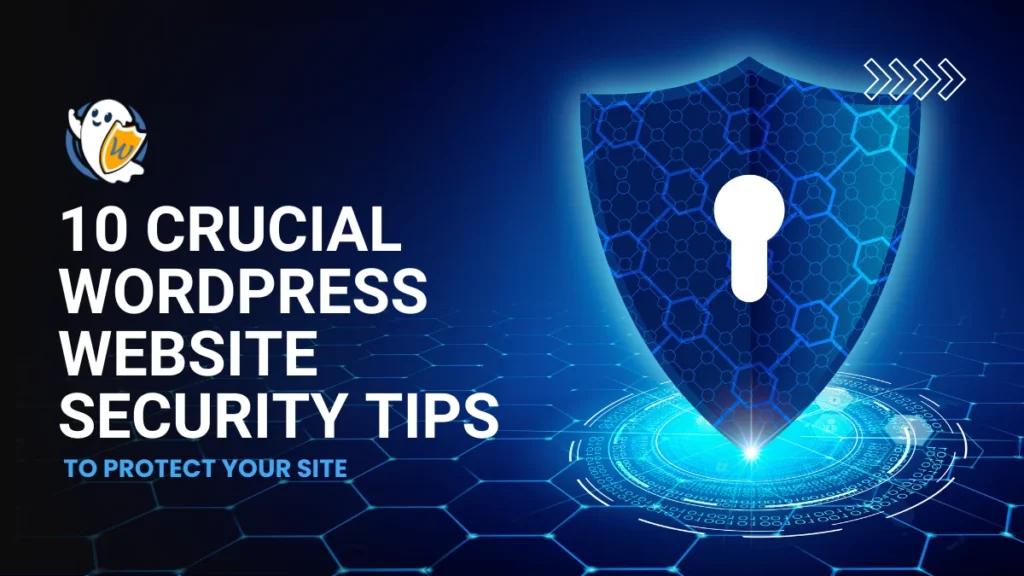10 Crucial WordPress Website Security Tips to Protect Your Site
Running a WordPress site comes with responsibilities, and one of the most important is keeping it secure. WordPress powers a large portion of websites online, which makes it a common target for hackers. Whether you’re managing a personal blog or a business site, taking steps to improve your security can save you time, money, and stress.
Here are 10 WordPress website security tips that can help protect your site from common threats.
1. Keep WordPress Core, Themes, and Plugins Updated
Outdated software is one of the most common ways hackers gain access to WordPress sites. Developers regularly release updates that fix bugs and patch security holes. Make sure to update your WordPress core files, themes, and plugins as soon as new versions become available.
2. Use Strong Passwords and Change Them Regularly
Using easy-to-guess passwords leaves your site vulnerable. Choose passwords that include a mix of letters, numbers, and symbols. Avoid using the same password across multiple accounts. Change your passwords every few months for added protection.
3. Limit Login Attempts
By default, WordPress allows unlimited login attempts. This opens the door for brute-force attacks where hackers try different password combinations until they get in. Install a plugin that limits login attempts and locks out users after several failed tries.
4. Install a Security Plugin
A good security plugin can monitor your site for suspicious activity, block known threats, and alert you if something goes wrong. Popular options include Wordfence, Sucuri Security, and iThemes Security. These tools offer features like firewall protection, malware scanning, and login monitoring.
5. Use Two-Factor Authentication (2FA)
Two-factor authentication adds an extra layer of security by requiring a second form of verification in addition to your password. This could be a code sent to your phone or generated by an app like Google Authenticator. It’s simple to set up and makes it much harder for someone to access your account without permission.
6. Choose Reliable Hosting
Your hosting provider plays a big role in keeping your site safe. Choose one that offers built-in security features like firewalls, regular backups, malware scanning, and support for SSL certificates. A good host will also keep their servers updated to prevent vulnerabilities.
7. Backup Your Site Regularly
Even with strong security in place, things can still go wrong. Regular backups ensure you can restore your site quickly if it gets hacked or breaks due to an update or error. Use plugins like UpdraftPlus or BackupBuddy to schedule automatic backups.
8. Disable File Editing in the Dashboard
WordPress allows admins to edit theme and plugin files directly from the dashboard. Hackers who gain access to your admin panel can use this feature to insert malicious code. You can disable file editing by adding this line to your wp-config.php file:
“`php
define(‘DISALLOW_FILE_EDIT’, true);
“`
9. Change the Default Login URL
Most WordPress sites use `/wp-admin` or `/wp-login.php` as their login page URL. Changing this URL makes it harder for bots and attackers to find your login page and attempt brute-force attacks. Plugins like WPS Hide Login let you make this change easily.
10. Monitor User Activity
If you have multiple users on your site, it’s important to keep track of what they’re doing—especially those with admin rights. Activity log plugins like WP Activity Log help you see who logged in, what changes were made, and when they happened.
—
Following these WordPress website security tips doesn’t require advanced technical skills but can significantly reduce the risk of getting hacked or losing data.
Security isn’t something you set once and forget—it’s an ongoing process that requires regular attention. By applying these WordPress website security tips, you’re taking practical steps toward keeping your site safe for both you and your visitors.
Make these practices part of your regular maintenance routine so you can focus more on building content—and less on fixing problems later down the road.

